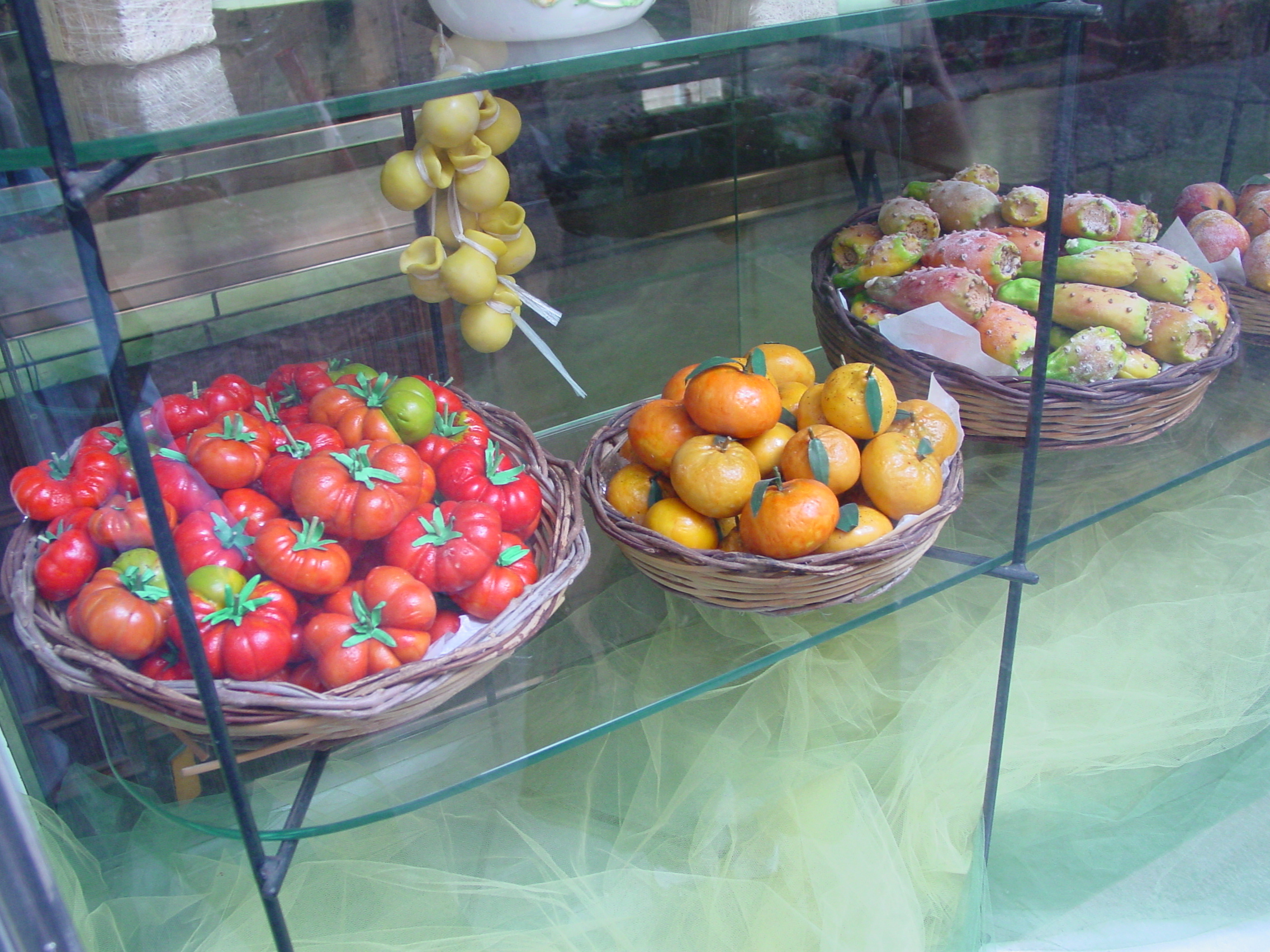There is much dispute over the origins of almonds. Some say the fruit tree first grew in Central Asia between Iraq, Iran, Turkmenistan, Afghanistan, and Kurdistan or in eastern Asia between Uzbekistan and Mongolia. Others cite botanical and archaeological evidence to point to West Asia, particularly the Levant region. Wherever the almond originated, it clearly spread to the shores of the Mediterranean into northern Africa and southern Europe, including Italy.
One almond in particular, the Avola almond of Sicily, is highly regarded for its applications in pastry-making and was traditionally sugared for use in wedding confetti. Darker, thinner, and stronger tasting than a California almond, it comes in four varieties: Pizzuta, Fascionello, and Romana or Corrente d'Avola.
Sally Giannetti, owner of Florence-based Giannetti Artisans, carries Pizzuta almonds, named for their pointed and sharp profile. She took time out to share more about this unique variety.
Tell us about Giannetti Artisans and how you got started.
I'm originally from Chicago, where I was born and raised. My parents are both Italian, and they were born in Italy. They emigrated to Chicago about 50 years ago.
My mom always brought me back to Italy when I was a kid because my grandparents were here. So, aside from my family in the United States, I was exposed to the country, the traditions, and the culinary "habits." I grew up speaking Italian in my house. It was my first language.
I hated coming to Italy when I was younger, but then I started college and majored in international business and Italian. My university offered study abroad programs in Florence. It was required that I do at least one study abroad program in a four-year term.
So, I came to Florence, fell in love, and said I'd move to Florence after I graduated college, and that's what happened.
After several years of working various sales jobs and making a lot of money for others, I wanted to start my own business and make some money for myself! After giving a business plan a lot of thought, I like the idea of somehow connecting the two countries together: my family origins and my place of birth. I thought food was a great way to do that, and I said, "You know what? In the United States, there isn't real gourmet Italian food. A lot of the products that are on the shelves out there are made in the United States with an Italian flag label on them, and they really aren't Italian." So, I said, "I want to start importing true Italian food."
I created my own label and logo. I started from zero. I was not in this business or this industry. I started online, and I created my website. Then, I was selling on Amazon, which I still do, and it grew slowly.
I started sourcing from different regions in Italy, and I was very picky about choosing the small artisans. I don't buy any products on the grocery shelves here. I look for small- to medium-sized companies that make small-batch products, and that's what is in my product line. It's all Italian. Nothing is made elsewhere. The ingredients are all 100% Italian.
What are Avola almonds?
Avola is where they make wine, so it's a very arid territory. It's near Syracuse, and it's a small town located inland but close to the coastline. There is a huge concentration of almond trees. The particular characteristic of the almonds grown in this area is the fact that they blossom in January. This is because this particular area is a microclimate protected by the mountains and the Mediterranean Sea that keeps the temperature mild-mannered. The soil is extremely dry making the almond production environmentally sustainable since almonds do not need a large quantity of water. A special variety called the "Pizzuta" contains a higher quantity of healthy fat, making it an important protagonist of many nutritional values. It is also famous because years ago, it was used to make the confetti for Italian weddings due to its delicious flavor and physical traits since it has a long and thin oval shape to it.
The Avola almond (unlike the California almond, which contains a lesser quantity of oils and tends to taste rather bland) contains a high concentration of oils.
How else do Avola almonds differ from California almonds?
Obviously, the quantity makes the difference, even in price, because California almonds are easier to get and have a higher production quantity. California almonds are used more for mass production, whereas Avola varieties are used more specifically for making pastries and small-batch products.
The taste is very strong, whereas with a Californian almond, it is a bit more bland. It certainly doesn't leave you with that nutty flavor that the Sicilian one does. Some people don't like it because they're used to a more gentle-flavored almond.

Sicilian almond granita
How is the Avola almond used?
In Italy, they use it to make pastries. There's a drink that is made during the summer, chilled almond milk, and it's made at the bar. Or they make a granita using Sicilian almonds and adding sugar to it. Sometimes, they toast the almonds; sometimes, they don't, depending on what it is used for. The more you toast them, the stronger the flavor is. They use it to make marzipan and gelato.
Fruit-shaped marzipan (frutta martorana) on display in Acireale
What do you hope people appreciate about Avola almonds?
I think the taste—they have a very distinct flavor. Like I said, not everyone likes them if they're used to a bland-tasting almond.
This is the reason why I started this business. If you purchase chestnut flour from a grocery store anywhere in the United States, it won't have the same taste as the chestnut flour that I sell, for example.
What is done in processed foods with these large mass-production companies is that they don't dry or roast the fruits on wood embers but rather in huge industrial ovens. Nuts are dried in these ovens for 8 or 10 hours rather than on wood embers for 40-plus days. The processing method makes the difference. Large multinational companies need to cut their costs and produce high quantities. It makes the product cheaper and perhaps of lesser quality, but it also takes away the authentic taste of that nut or fruit.
If you taste some of my chestnut flour, it has a strong smoky taste as opposed to flour purchased off the grocery store shelf that tastes just like plain flour! A lot of people's palates are not accustomed to such a different flavor because most food in the United States has a standardized production method, making everything taste just about the same.
The same rule applies to almonds. If you're used to eating processed foods, your palate becomes accustomed to those limited flavors; when you taste a Sicilian almond, it's strong, nutty, and just delicious.
Hopefully, people will appreciate something different from their palate's "comfort zone." Those who have been exposed to authentic Italian goods will know what they're looking for, which is exactly what my business is all about.
If you enjoyed this article, consider subscribing to my newsletter for more content and updates!

